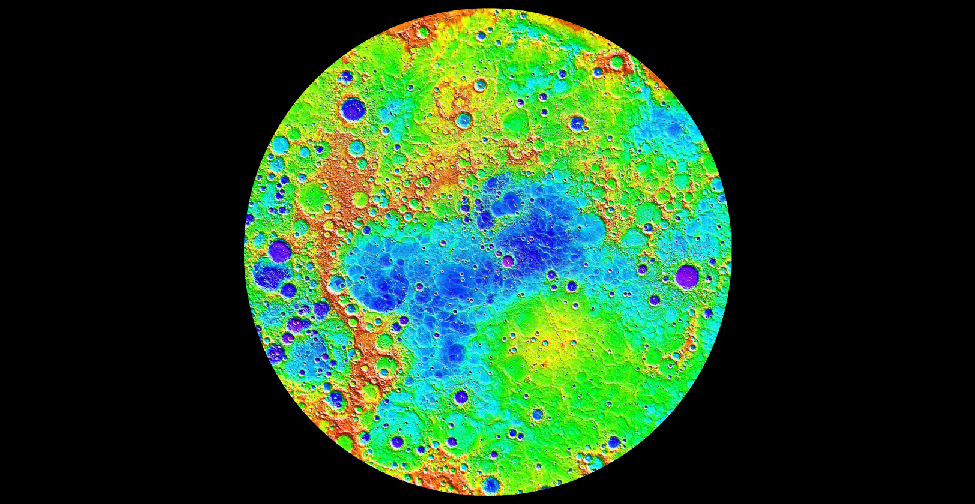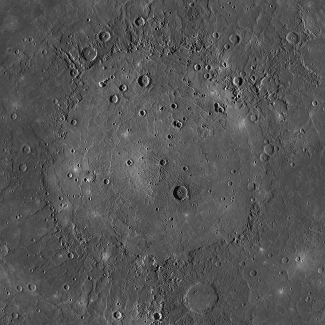| << Chapter < Page | Chapter >> Page > |
The first close-up look at Mercury came in 1974, when the US spacecraft Mariner 10 passed 9500 kilometers from the surface of the planet and transmitted more than 2000 photographs to Earth, revealing details with a resolution down to 150 meters. Subsequently, the planet was mapped in great detail by the MESSENGER spacecraft, which was launched in 2004 and made multiple flybys of Earth, Venus, and Mercury before settling into orbit around Mercury in 2011. It ended its life in 2015, when it was commanded to crash into the surface of the planet.
Mercury’s surface strongly resembles the Moon in appearance ( [link] and [link] ). It is covered with thousands of craters and larger basins up to 1300 kilometers in diameter. Some of the brighter craters are rayed, like Tycho and Copernicus on the Moon, and many have central peaks. There are also scarps (cliffs) more than a kilometer high and hundreds of kilometers long, as well as ridges and plains.
MESSENGER instruments measured the surface composition and mapped past volcanic activity. One of its most important discoveries was the verification of water ice (first detected by radar) in craters near the poles, similar to the situation on the Moon, and the unexpected discovery of organic (carbon-rich) compounds mixed with the water ice.
Scientists working with data from the MESSENGER mission put together a rotating globe of Mercury, in false color, showing some of the variations in the composition of the planet’s surface. You can watch it spin.


Most of the mercurian features have been named in honor of artists, writers, composers, and other contributors to the arts and humanities, in contrast with the scientists commemorated on the Moon. Among the named craters are Bach, Shakespeare, Tolstoy, Van Gogh, and Scott Joplin.
There is no evidence of plate tectonics on Mercury. However, the planet’s distinctive long scarps can sometimes be seen cutting across craters; this means the scarps must have formed later than the craters ( [link] ). These long, curved cliffs appear to have their origin in the slight compression of Mercury’s crust. Apparently, at some point in its history, the planet shrank, wrinkling the crust, and it must have done so after most of the craters on its surface had already formed.

Notification Switch
Would you like to follow the 'Astronomy' conversation and receive update notifications?